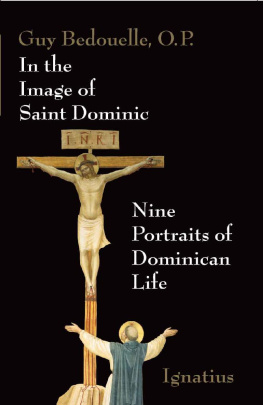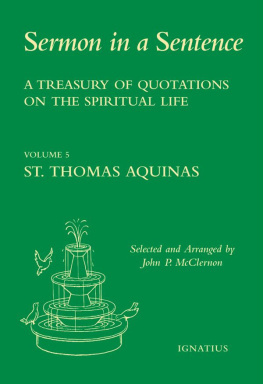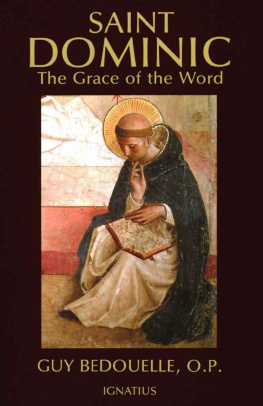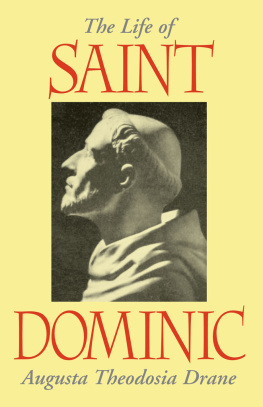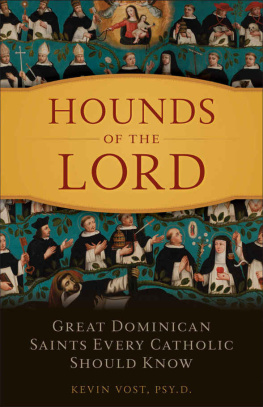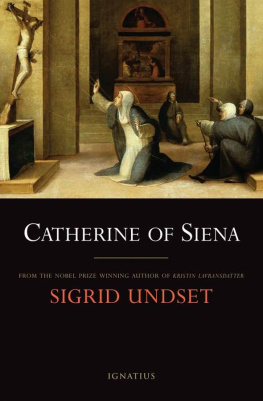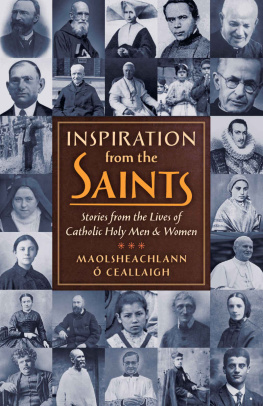IN THE IMAGE OF SAINT DOMINIC
GUY BEDOUELLE, . P.
_________________________
IN THE IMAGE
OF
SAINT DOMINIC
_________________________
Nine Portraits of Dominican Life

Translated by
Sr. Mary Thomas Noble, O. P.
With original sources translated by
W. Becket Soule, O. P.
Foreword by
TIMOTHY RADCLIFFE, O. P.
Master General of the Dominican Order
IGNATIUS PRESS SAN FRANCISCO
Cover art: Fra Angelico, Crucifixion with
the Virgin and Saints John the Evangelist,
Dominic and Thomas Aquinas (detail),
S. Marco, Florence, Italy.
Scala / Art Resource, New York
Cover design by Roxanne Mei Lum
1994, Ignatius Press, San Francisco
All rights reserved
ISBN 978-0-89870-467-9 (PB)
ISBN 978-1-68149-260-5 (E)
Library of Congress catalogue number 93-78534
Printed in the United States of America
CONTENTS
Nine Ways of Dominican Life
return to the essential
the armor of light
study
prayer
art
indignation
spiritual realism
poverty
friendship
Saint Dominic and Fervor
joy
FOREWORD
After nearly eight centuries we Dominicans are still one Order, while enjoying that diversity of gifts which, according to St. Paul, is a sign of the working of the Holy Spirit (1 Cor 12:12-30). Given the Orders active involvement, since the thirteenth century, in most of the important events that have marked the history of the Church and society, this unity is astonishing. Yet it is this unity that St. Dominic prayed might bind together his followers.
Just think how different are the circumstances in which one might have encountered a Dominican during this long history, marked by both continuity and contrast. In the thirteenth century one might have come across a couple of the brethren making their way across the country lanes of Europe, singing psalms to keep up their spirits, in danger of attack by thieves or heretics, on their way to the frontiers of Christendom and beyond. Or one might have found them preaching in our churches built in the new towns that were appearing all over Europe at that time, teaching in the newly founded universities such as Paris and Oxford, debating the hot issues of the day, the suspect Aristotelian philosophy or the new experimental sciences, and even experimenting with a little alchemy. During the Renaissance these same churches are transformed by the artists and architects of the time, such as Botticelli in Florence or da Vinci in Milan, and are where the brethren struggle with the new questions of the moment, St. Antoninus wrestling with the moral problems posed by the new world economy or Francisco de Vitoria engaged in the first formulation of a theory of human rights. Other brethren cross the Atlantic in search of a new world, and disappear into the jungles of Central America, refusing the protection of the armies so as to preach peacefully to the native people. In the last century we find the brethren again crossing the ocean, in the new steamships, to accompany their people as they push west in search of food and gold and freedom. In our own age, the followers of St. Dominic are to be found nearly everywhereninety-two countries sent representatives to the General Chapter of 1992 in Mexicoengaged in every imaginable work, from running an ecological farm in Benin to exploring Coptic verbs in Fribourg. What has held all these different men and women together throughout the ages? A passion for the gospel, after the image of St. Dominic.
As one reads these fascinating pages by Father Guy Bedouelle, one is constantly struck by how many of the people whom he describes are marked by a passion and a fervor. It may be the passionate intellectual search of St. Thomas, who asked of Jesus: Now nisi te, Domine (Nothing but you, Lord), or Bartolom de Las Casas, vigorously pursuing justice for the Indians: I believe God wants me to fill heaven and earth and the whole earth anew, with cries, tears and groans!, as he wrote to the King. Or there is St. Catherine of Siena, with her sweet, loving, grieving desires for the reform of her Church, and who reverenced the Christ who was in the center of her being as love and desire. In all this passion we see both various expressions of that fervor which so marked St. Dominic, and the many faceted attraction of the God who would draw us to Himself by touching our deepest desires.
Recent General Chapters have tried to help the Order focus its priorities in face of such endless demands and possibilities. In particular our apostolic commitment aims to achieve four main objectives: intellectual formation, world mission, social communication, and justice. Because of the place our brother Thomas Aquinas holds in the Church, few will be surprised that the pursuit of Truth and the sanctification of the human intelligence is one of our priorities. This is a searching which God may grace. And despite, within contemporary Western culture, a profound suspicion of arid intellectualism, all true study is deeply pastoral. Justice cannot flourish in a society that does not nurture a passion for Truth for its own sake and not for what it may yield financially. And careful attention to texts can be a wonderful training for an attentive, patient listening to other people! The greatest scholars I have known have been people of deep pastoral instincts. And so it is not surprising that our study carried us to the frontiers of the apostolic life, as happened in the case of the thirteenth century martyr Peter of Verona, the form of whose dedication we may have to struggle a little to understand. Or in the contrasting case of Henri-Dominique Lacordaire in the nineteenth century, we see a man engaged in the frontiers between the gospel and a world of predominantly secular values, seeking to understand anew the nature of liberty.
As preachers of the Gospel, Dominicans must wrestle with the arts of communication. Today this calls for every resource that science can supply, but even before the age of the mass media, of television and radio, Dominicans included men and women who had a remarkable ability to gain other peoples attention: saints of the fourteenth century such as the blessed Fra Angelico, whose depictions of the mysteries of Christs life still captivate us, or the uneducated saint, Catherine of Siena, whose dialogues with God and letters to ordinary people can still enchant and challenge us today. And what about the communication skills of my thirteenth century predecessor Blessed Jordan of Saxony, of whom it was said that parents locked up their children when he came to preach lest they not be seen again!
The preached word does not merely communicate an abstract truth but can refashion lives and society. If it is in any sense the Word of the Lord, then it is a creative and transforming word, helping to bring about the Kingdom. And so there is a deep relationship between the Dominican vocation to preach, and a passion for justice. And so, among the many Dominicans from both the old and the new worlds that one could cite, it is especially pleasing that the present volume includes the example of a woman and a cleric and a cooperator brother, each of whom represents this passion for a more just world. In Renaissance Italy, the cloistered nun and mystic, St. Catherine de Ricci, graciously yet firmly withstood the insistence of certain ecclesiastical authorities who failed to appreciate the souplesse required to maintain a viable religious life for the women of her day. And of course there is Bartolome de Las Casas whose championing of the full rights of the native American peoples remains a beacon for us today. Then half a century later, we have the extraordinary witness of the mulatto cooperator brother, St. Martin de Porres, who cheerfully demonstrated to the Church of the new world the fire of charity that the Gospel can ignite in the midst of terrible suffering.
Next page
